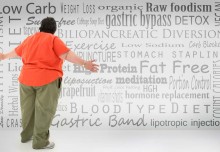On a trip to Alaska I saw salmon jumping repeatedly upstream, moving against the current and sometimes even swimming to higher elevations. What an amazing example of “exercise” in nature. Wild salmon is an excellent source of protein, omega-3 fats and vitamin D. It’s one of my favorite foods. But their couch-potato counterparts, farm-raised salmon, never have to swim very far or exercise very much; and it has an effect on the salmon. According to the U.S. Department of Agriculture, wild salmon contain only 10- 15% fat by weight. Their “sedentary” farm-raised cousins are fatter – 30-35% fat by weight. Wild salmon also contain 20% more protein than their farm-raised counterparts. Hmmm. Sounds like people; The ones that exercise have less fat and more “muscle.”
So the next time you find yourself sitting on the couch watching salmon swim upstream on the Discovery Channel, turn it off, pick up your rod and reel and go for a walk on the beach or along a river. If you don’t like to fish, you can still take the walk, or go for a swim. You’ll stay trimmer and stronger, and may even catch dinner. A few more farm-raised facts to make you “go wild”:
- Farm-raised salmon contain higher amounts of pro-inflammatory omega-6 fats and lower amounts of the healthier omega-3 fats found in wild fish
- Farm-raised salmon are given a salmon-colored dye in their food to cause their grey color to turn pinker
- Farm-raised salmon are given antibiotics to prevent disease and have higher pesticide concentrations than wild salmon due to a higher level of pesticides in the sardines, anchovies and other fish ground up in their food.





